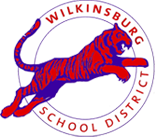Common Core Standards
Elementary Reading Program: Harcourt-Journeys (K-6)
The school district promotes a Balanced Literacy Framework that includes all aspects of literacy within a daily block of instruction. Guided by the PA Core Standards, the Framework incorporates aspects of reading, writing, listening and speaking. Harcourt Journeys is a research-based, developmental reading/language arts program that serves as the program's anthology. Divided into themes, the text helps to promote a sense of responsibility for ourselves, our community, and our world. Each student is provided opportunities to develop and expand reading skills through phonics instruction, guided reading strategies, shared reading, intervention strategies, integrated language arts components, and regular assessments.
Fountas & Pinnell’s Leveled Literacy Intervention Program (K–2/3)
The Leveled Literacy Program is a short-term reading intervention program to assist struggling readers in reading, phonics, writing and word study. The program includes individual assessments to determine each student’s correct instructional level. Via small groups, teachers instruct to grow students to the next instructional level and intervene to target improvement of students’ specific reading challenges; and monitor to effectively use data to intensely drive each student’s incremental progress.
Elementary Math Program: Go Math
Also aligned to the PA Core Standards, math instruction focuses not only on the acquisition of skills, but also conceptual understanding. The program is supported by the Harcourt – GO Math series, as well as additional materials and resources aligned with the Standards. Over aching the grade-level skills as the Standards of Mathematical Practice which serve as universal practices for the application of mathematical thinking and concept integration.
Elementary Science Program: Harcourt Science Program (K-6)
Harcourt Science is a comprehensive science program for students from Kindergarten through grade 6.
The program embraces the goals and content objectives of the National Science Education Standards and Pennsylvania’s Learning Goals, Academic Expectations and Core Content for Assessment. The foundation of the program lies in a balance of the three domains of science – life science, earth science, and physical science – providing the context for conceptual understanding, scientific inquiry, and applications/connection to science and technology, personal and social perspectives and the history and nature of science. Solid concept development is driven by three important elements of instruction:
investigating through hands-on activities, reading for understanding of science concepts, and linking to additional experiences to provide greater depth of understanding. Woven within every lesson are opportunities to develop skills for lifelong learning such as science process skills and reading, writing, and math skills.
Organization
There are six units at each grade level, offering a balance of Life, Earth, and Physical Science – two Life Science Units, two Earth Science Units and two Physical Science Units. Each lesson follows a consistent learning sequence that gives students the opportunity to Investigate the natural world, Learn About interesting, relevant information, and Link science to mathematics, writing, technology, and other areas of the curriculum.
Student Experiences
Harcourt Science provides students with many opportunities to think and work as scientists. Students conduct scientific investigations, read to learn, write to communicate, and use numbers in meaningful ways. Additional interactive experiences are provided through an array of technology offerings – computer software, videos, and the Internet.
Assessment
Harcourt Science provides a comprehensive, multidimensional assessment program that is aligned with instruction and includes many assessment options – ongoing informal assessment opportunities for each lesson, formal reviews and tests for each chapter, Performance Assessment with scoring rubrics, Portfolio Assessment, and Student Self-Assessment. Like the instruction, the Assessment Program is student-centered, gives students a variety or opportunities to show what they know, and enables teachers to make sound instructional decisions.
Asset Science (K-6 Hands-On Science)
ASSET Inc. is an independent non-profit educational reform initiative dedicated to continuously improving the abilities of teachers – and the performance of students – with initial efforts in K-8 science education. Nationally, ASSET is one of eight LASER (Leadership and Assistance for Science Education Reform) sites in partnership with the National Science Resources Center, an organization of the Smithsonian Institution and the National Academies of Science.
ASSET member schools continue to benefit by participating in ASSET’s research and development process, which identifies new and existing materials along with teacher-driven professional development to continuously improve the teaching and learning process, not only in science, but also integrating literacy and math.
ASSET, Inc. is an inquiry-based, hands-on-minds-on approach to learning Science the way scientists do Science. Wilkinsburg schools use the program in grades K-6.
Education Programs:
- Reading and Language Arts
- Mathematics
- Science
- Social Studies
- Art
- Music
- Physical Education
- Library/Media
- STEAM
Elementary Instructional Strategies / Interventions / Programs
- IXL
- Imagine Learning; Literacy and Math
- Imagine Math Facts
- RAZ Kids
- Reading Eggs
The Pennsylvania programs are completely web-based.
- Applications are incorporated into instructional planning to support skill development and provide ongoing practice.
- The academic material is organized in topics which contain a lesson and assessment questions with explanations.
- Students work independently, at their own pace, on skills and concepts for which they need additional practice or increased fluency. Student performance data guides the prescriptive path they take in both reading and math.F
- Classroom teachers have the ability to view and monitor student progress to make changes to the level, frequency and type of material they access.

